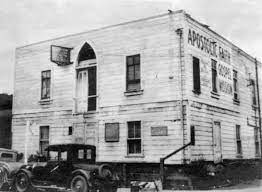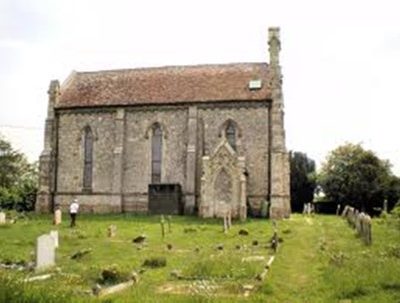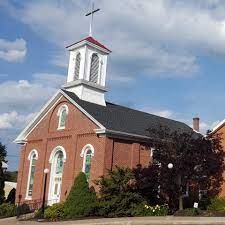Assemblies of God:

Introduction: The Assemblies of God organization is one of the largest and fastest growing Pentecostal Protestant denominations in the United States. The Assemblies of God General Council is the legislative body that rules over the Assemblies of God churches. It has no affiliation with either the World Council of Churches or the National Council of Churches. The Assemblies of God churches are all self-governing and have the right to select its own pastor and elect its own officers. Each church has the power to discipline its membership and sanction the pastor. Each church must follow its own by-laws and the word of the Holy Scripture is used in administering any discipline.
The Assemblies of God believes Christ is the head of the church and the life of Christ is the pattern for all conduct of the church. Pastors are elected by their local congregations and are responsible for the public ministry and the operation of the local church. There are elected deacons to assist the pastor.
Jim Bakker and Jimmy Swaggart were notorious Assemblies of God televangelists. They hurt the reputation of the Assemblies of God Church when news stories and legal actions exposed their sexual scandals and exploitations of monies.
Jim Bakker, an Assemblies of God preacher, started his television ministry in 1978 as a co-host of The 700 Club with Pat Robertson. Jim Bakker launched the Trinity Broadcasting Company and built the PTL Television Network and the Heritage U.S.A. His wife, Tammy Faye Bakker shared his spot light. It was in 1987 when the press publicized the illicit sex scandal involving Jim Bakker and his church secretary, which led to an investigation of his ministry’s financial matters. He was charged for financial fraud and found guilty and sentenced to prison.
Jimmy Swaggart was an Assemblies of God television evangelist. Swaggart criticized Jim Bakker for discrediting the church and the religious broadcasting industry. It was less than a year later, on February 21, 1988, when Jimmy Swaggart was found guilty of sexual misconduct involving a prostitute. The Assemblies of God dismissed Jimmy Swaggart. There was also a second scandal of sexual misconduct with a prostitute and Jimmy Swaggart in 1991.
History
The history for the Assemblies of God Church began early in 1901 and started as a religious revival. There was a strong need for more of the power of God in the lives of Christians. There were intense prayers from both individual and groups, all searching for a heightened spiritual experience. The Holy Spirit spread to a large number during this revival. The revival produced an unstructured impulsive worship and many of the participants started to speak in tongues. This is referred to as the “baptism in the Holy Spirit” in the book of Acts Chapter 2 during Pentecost. The speaking in tongues is believed by The Assemblies of God churches to involve a language that is divinely inspired by God. Usually this language is not understood by others.
This start of the Pentecostal revival can be traced back to the Bethel Bible College in Topeka Kansas January 1, 1901. It promptly spread first to Missouri, Texas, Arkansas, and California. The Azusa Street Revival brought about the existence of the Assemblies of God Church. The realization for the potential of evangelistic outreaches started around 1914. There were many preachers and laymen who gathered from many states and formed a general council in Hot Springs Arkansas in 1914.
Eudorus Neander Bell is credited as being both the founder and first chairman of the Assemblies of God Church. was born in Lake Butler, Florida on June 27, 1866 and died June 15, 1923. His main focus for the establishment of the Church was for unity in doctrine for the churches, finding a common name and chartering churches, proper Bible training to follow the doctrine, and setting up foreign missions. The General Council of the Assemblies of God was formed. The name was for legal identity and left the structuring and organization to the individual congregation for their own self-governing. The approved Statement of Fundamental Truths was approved by the General Council in 1916. It was a sensible statement for explaining their stand on doctrines and fellowship.
Eudorus Bell joined with H. G. Rogers who also was the head of another independent Pentecostal movement around 1913. They called this church The Church of God in Christ. It was in agreement with the Apostolic Faith and they tagged the full name of the church The Church of God in Christ and In Unity with the Apostolic Faith Movement; it was later shortened to the Church of God in Christ.
Belief
The Assemblies of God officially hold to the original Statement of Fundamental Truths. It contains the 16 core doctrinal standards and is known as Position Papers. These doctrines are established on the evangelical confessions of faith with a Pentecostal flare. The main focus for The Assemblies of God doctrine is dealing with salvation, baptism in the Holy Spirit, divine healing and the Second Coming of Christ:
Statement of Fundamental Truths
- The Bible is inspired by God and is “the infallible, authoritative rule of faith and conduct”.
- There is only one true God who exists as a Trinity.
- Jesus Christ is the Son of God and, as the second person of the Trinity, is God.
- Man was created good by God but was separated from God through original sin.
- Salvation “is received through repentance toward God and faith toward the Lord Jesus Christ”.
- There are two ordinances. Believer’s baptism by immersion is a declaration to the world of the believer’s faith in Christ. The Lord’s Supper is a symbolic remembrance of Christ’s suffering and death.
- Baptism in the Holy Spirit is a separate and subsequent experience following conversion. Spirit baptism brings empowerment to live an overcoming Christian life and to be an effective witness. 8. Speaking in tongues is the initial physical evidence of the baptism in the Holy Spirit.
- Sanctification is “an act of separation from that which is evil, and of dedication unto God”. It occurs when the believer identifies with, and has faith in, Christ in his death and resurrection. It is understood to be a process in that it requires continual yielding to the Holy Spirit.
- The Church’s mission is to seek and save all who are lost in sin; the Church is the Body of Christ and consists of all people who accept Christ, regardless of Christian denomination.
- Divinely called and scripturally-ordained ministers serve the Church.
- Divine healing of the sick is provided for in the atonement.
- The “imminent and blessed hope” of the Church is its rapture preceding the bodily return of Christ to earth.
- The rapture of the Church will be followed by the visible return of Christ and his reign on earth for a thousand years.
- There will be a final judgment and eternal damnation for the “wicked dead”.
- There will be future new heavens and a new earth “wherein dwelleth righteousness”.
The Assemblies of God hold the Bible to be the inspired, infallible, unquestionable truths delivered by the word of God. They believe Christ was born a man and was sacrificed on the cross. They believe Christ is the Son of God and was sent to provide believers with a new life. The Assemblies of God believe everyone has sinned and is in need of the forgiveness from God. They believe Jesus Christ is the Son of God and it is through His death and Resurrection that forgiveness is offered to anyone who believes.
The Assemblies of God believe Baptism by water is considered an Ordinance and is required for salvation. Baptism in the Holy Spirit is considered the new birth. It is only with the Baptism in the Holy Spirit that speaking in tongues or “glossolalia” can be accomplished. The speaking in tongues is believed, by The Assemblies of God churches, to involve a language that is divinely inspired by God. Usually this language is not understood by others. Speaking in Tongues is a part of the weekly church service. They believe it is a gift from God through the Holy Spirit. The Book of Acts and 1 Corinthians refers to the Gifts of the Spirit that is given by God to the faithful on the Day of Pentecost. Speaking of tongues is a sign of a second Baptism and proof that the Holy Spirit dwells in the heart and soul of the believer. It is a sign of anointing and a gift from God. There is a healing service, which is held separate to the usual Sunday service.
The Assemblies of God believe The Lord’s Supper, also called Holy Communion, is both an ordinance and a symbol. The Holy Communion represents the Last Supper of Jesus Christ when he was on earth. It was given just before His death on the cross. The bread and wine represents the Body and Blood that was shed by Christ for the sins of the world. Believers are encouraged to partake of Holy Communion.
The Assemblies of God believes in Divine Healing. The official position is that Christ paid for all physical suffering with His work of atonement. When a Christian gets sick the supernatural healing of the Holy Spirit can be employed by the laying on of hands. The power of healing is a gift from the Holy Spirit
The Assemblies of God believes some date in the near future the Second Coming of Jesus Christ will occur. They believe the first coming of Jesus occurred with His human birth to the Virgin Mary. The Assemblies of God believe in the event of Rapture of the Church when all Christians believing in Christ will forever be taken to live with Jesus forever.
Missions
The Assemblies of God began a home mission project in Southern California called “The Dream Center.” The church was introduced by Pastor Tommy Barnett in the inner city of Los Angeles in the old Queen of Angels Hospital. The Los Angeles International Church, as it was called, ministered to gang members, drug addicts, unwed mothers, children without parents, and ex-prisoners. Because of this center, the violence of all kinds dropped. It is being called a miracle. President Bush visited the Dream Center in 1988 and called it “a model for faith-based organizations.”
Prophesy attitudes explained – 01/18/2006
Prophesy attitudes explained
In an attempt to explain the position of Prophet that Pat Robertson holds to many of his followers, Gary B. McGee, a professor of Bible and Pentecostal studies at Assemblies of God Theological Seminary in Springfield Mo, explained that “there are various attitudes about prophecy” even among Pentecostals, with whom charismatic’s such as Robertson share many beliefs.
McGee, an Assemblies clergyman, said that in a typical Pentecostal congregation, a person usually receives a prophetic, divine message during a church service. The message is considered “a word of encouragement to the congregation.”
“It is not going to be, usually, a predictive prophecy that something is going to happen next year, or that God is going to judge some group,” McGee said. “That would be more the extreme.”
Pat Robertson, once an ordained Baptist minister, but no longer officially affiliated with that denomination, is part of the “evangelical” community that encompasses a wide diversity of denominations and movements. All emphasize evangelization, or spreading the Christian gospel.
Charismatics such as Robertson are spread out among many Christian denominations. They share an emotive worship style and belief that divine wonders described in the New Testament such as instantaneous healing and prophecy are still performed today. Their views overlap with those espoused by members of Pentecostal denominations such as the Assemblies of God.
Robertson often shares “God-given insights” about events in the future, and reveals “messages from God” that he has received. He recently found himself in hot water (Israel breaks contact with evangelist Pat Robertson) earlier this month when he suggested that God punished Israel Prime Minister Ariel Sharon with a stroke for ceding Israeli-controlled land to the Palestinians. “His view is basically a theological view of the Old Testament and the prophecy that the “promised land” was promised to the ‘chosen people,’ and its theirs throughout history,” said Vinson Synan, dean of the divinity school at Regent University, which Robertson founded.
Unlike Charismatics and Pentecostals, more traditional evangelicals say that wonders such as prophesy and speaking in tongues – speechlike sounds that are viewed by some as God-inspired – were limited to the early church. “Some of the more traditional evangelicals frown on such expressions in the modern age,” Synan said.
Reference:
Vegh, Steven G. (2006). “Pat Robertson is a prophet to his followers” Lewiston Tribune 14 Jan 2006: 5A.
Cite Article Source
MLA Style Citation:
Holstein, Joanne “Assemblies of God:.” Becker Bible Studies Library Jan 2006.<https://guidedbiblestudies.com/?p=2592,>.
APA Style Citation:
Holstein, Joanne (2006, January) “Assemblies of God:.” Becker Bible Studies Library. Retrieved from https://guidedbiblestudies.com/?p=2592,.
Chicago Style Citation:
Holstein, Joanne (2006) “Assemblies of God:.” Becker Bible Studies Library (January), https://guidedbiblestudies.com/?p=2592, (accessed).


